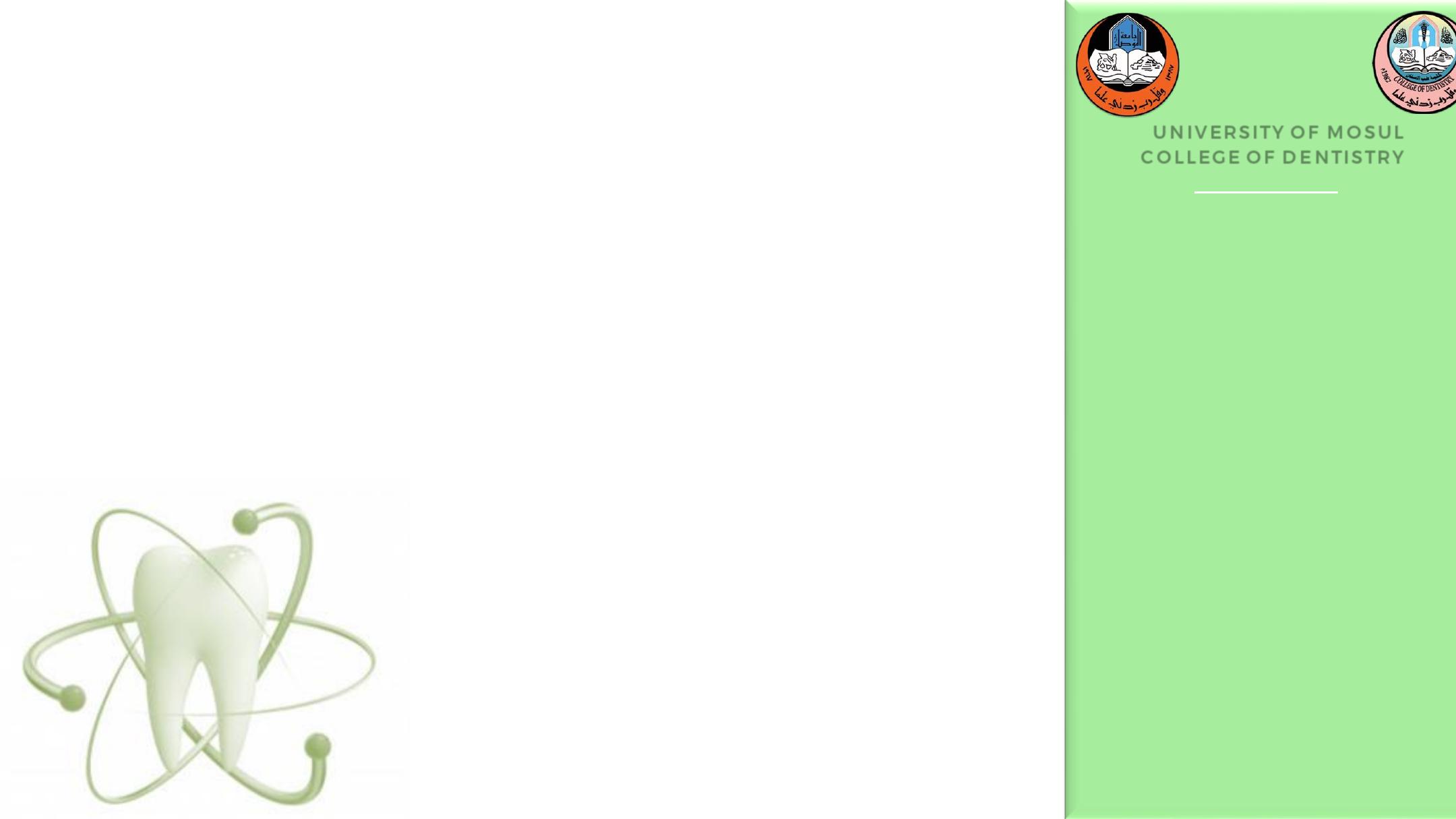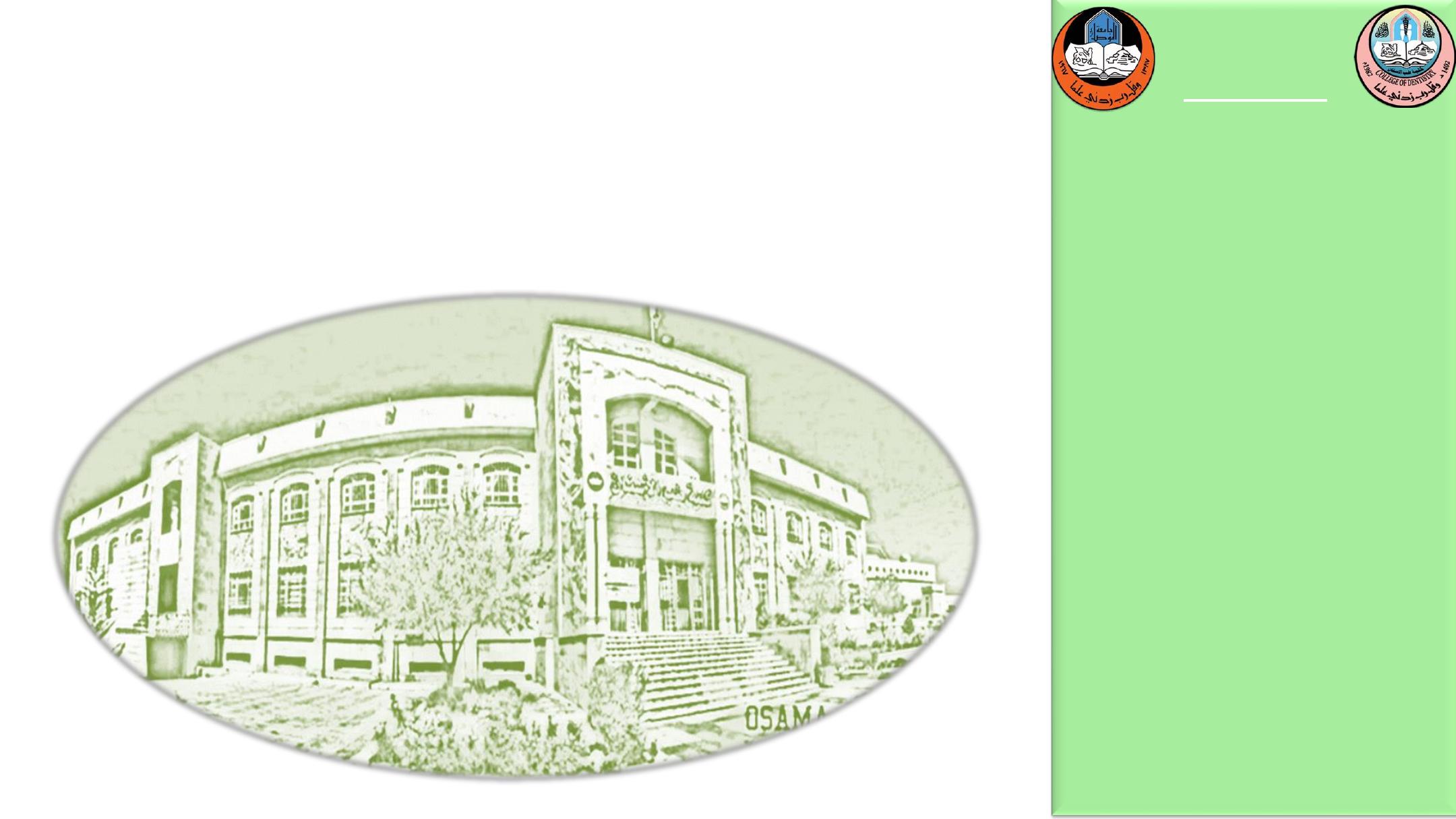
Stains and deposits on teeth
U N IV ERS ITY O F M O S UL
C O L L EGE O F D E NTIS TRY
2020-2021
Department of
Pedodontics,
Orthodontics
and Preventive
Dentistry
Department of:
HERE

U N I VE R S I T Y O F M O S U L
C O L L E GE O F D E N T I S T R Y
Stains and deposits on teeth
Baby teeth, also called primary teeth, are typically whiter
than adult permanent teeth because they are more calcified.
Baby teeth can become discolored for many reasons,
including:
• Inadequate brushing. If baby teeth aren't brushed
properly, bacteria (plaque) might form on the teeth —
which can lead to tooth discoloration.
• Medication use. Infant medications containing iron, such
as supplemental vitamins, might cause stains on baby teeth.
Taking the antibiotic tetracycline during pregnancy or
breast-feeding can cause a child to have discolored baby
teeth, too.

U N I VE R S I T Y O F M O S U L
C O L L E GE O F D E N T I S T R Y
• Tooth injury. A single dark tooth could be the result of
bleeding within the tooth due to dental trauma.
• Weak enamel. A genetic problem with enamel formation
might lead to discolored baby teeth.
• Excessive fluoride. Regularly mixing powdered or liquid
concentrate infant formula with fluoridated water might
increase your child's risk of developing faint white lines or
streaks on the teeth (fluorosis) if these kinds of formula are
your child's main source of food.

U N I VE R S I T Y O F M O S U L
C O L L E GE O F D E N T I S T R Y
• Illness. Some children might develop baby teeth with a
green or yellow hue if they are born with a condition in
which
there
is
too
much
bilirubin
in
the
blood
(hyperbilirubinemia).
If the discoloration is caused by poor dental hygiene, more
thorough brushing might help. Until your child learns to spit —
at about age 3 — use a smear of fluoride toothpaste no bigger
than the size of a grain of rice.
To keep your child's mouth healthy, avoid filling your child's
bottle with liquids such as sugar water, juice or soft drinks and
don't put him or her to bed with a bottle. Also, don't share eating
utensils with your child. This can spread cavity-causing
bacteria. If your child uses a pacifier, never dip it in honey or
sugar.

U N I VE R S I T Y O F M O S U L
C O L L E GE O F D E N T I S T R Y
Discuss your concerns about your child's baby teeth with his or
her doctor. He or she might refer you to a pediatric dentist. After
addressing any underlying issues, the dentist might recommend
bleaching the discolored teeth later on or simply watching the
teeth for signs of other problems.
How To Prevent or Limit Staining?
You can actually prevent staining in more ways than one;
brushing your teeth is helpful, as well as using whitening strips.
Though brushing and artificial whitening strips can be useful,
there are other, more natural ways to clean and whiten your teeth.
For instance, eating certain foods can help whiten your smile and
scrap off chromogens from your enamel.

U N I VE R S I T Y O F M O S U L
C O L L E GE O F D E N T I S T R Y
Nuts, carrots, cheese, and broccoli can be useful food do not
only nourish your
child’s
body,
but
clean their
teeth.
Water is a primary example of a beverage that can clean your
teeth, as well. Though juices and sodas can be tempting
(especially for a child), water is the best beverage to drink for
your health and your teeth.

THE END
U N I VE R SI T Y O F M O SU L
C O L L E GE O F D E N T I S T R Y
2020-2021
